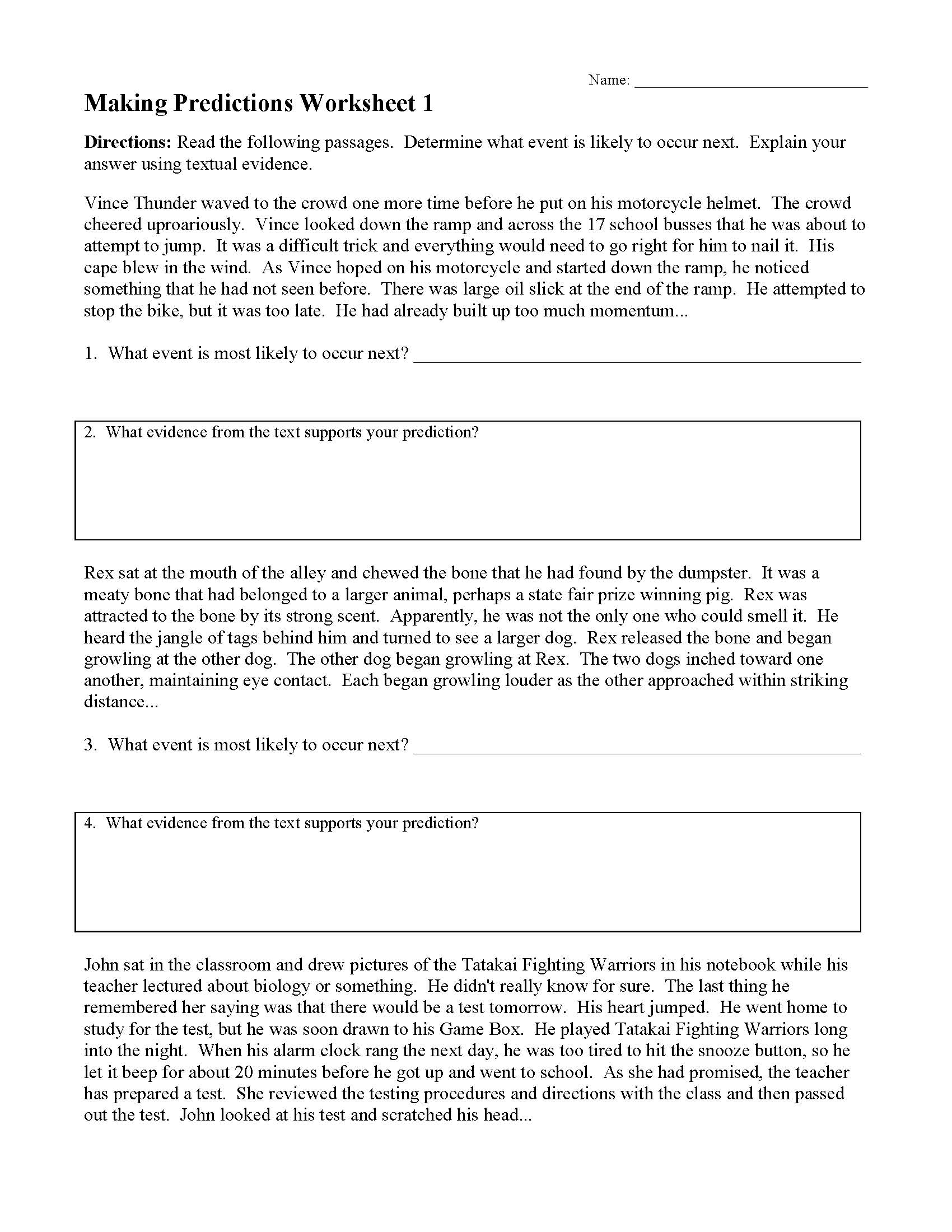
Looking for worksheets on making predictions? Here's one with ten practice problems. Students read short passages, determine what will happen next, and support their predictions with evidence. Suggested reading level for this text: Grade 5-9.





 you want to make edits to the file." />
you want to make edits to the file." />
 you want to print or send the files as-is." />
you want to print or send the files as-is." />


Based on the readability scores for this text, Making Predictions Worksheet 1 is recommended for students reading at grade levels 5 - 9. This text should be accessible to any student reading at a 5th grade reading level or higher.
R.1 - Read closely to determine what the text says explicitly and to make logical inferences from it; cite specific textual evidence when writing or speaking to support conclusions drawn from the text.
RL.4.1 - Refer to details and examples in a text when explaining what the text says explicitly and when drawing inferences from the text.
RL.5.1 - Quote accurately from a text when explaining what the text says explicitly and when drawing inferences from the text.
RL.6.1 - Cite textual evidence to support analysis of what the text says explicitly as well as inferences drawn from the text.
RL.7.1 - Cite several pieces of textual evidence to support analysis of what the text says explicitly as well as inferences drawn from the text.
RL.8.1 - Cite the textual evidence that most strongly supports an analysis of what the text says explicitly as well as inferences drawn from the text.
RL.9-10.1 - Cite strong and thorough textual evidence to support analysis of what the text says explicitly as well as inferences drawn from the text.
RL.11-12.1 - Cite strong and thorough textual evidence to support analysis of what the text says explicitly as well as inferences drawn from the text, including determining where the text leaves matters uncertain.